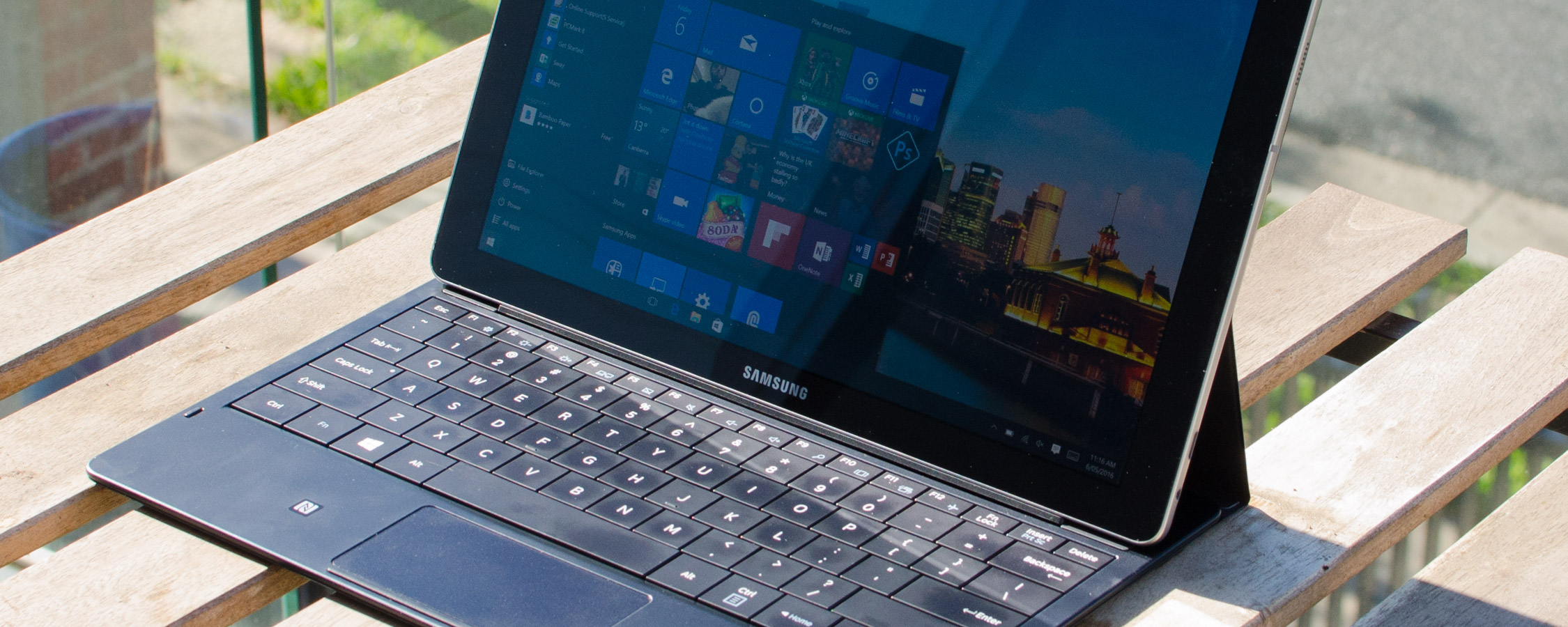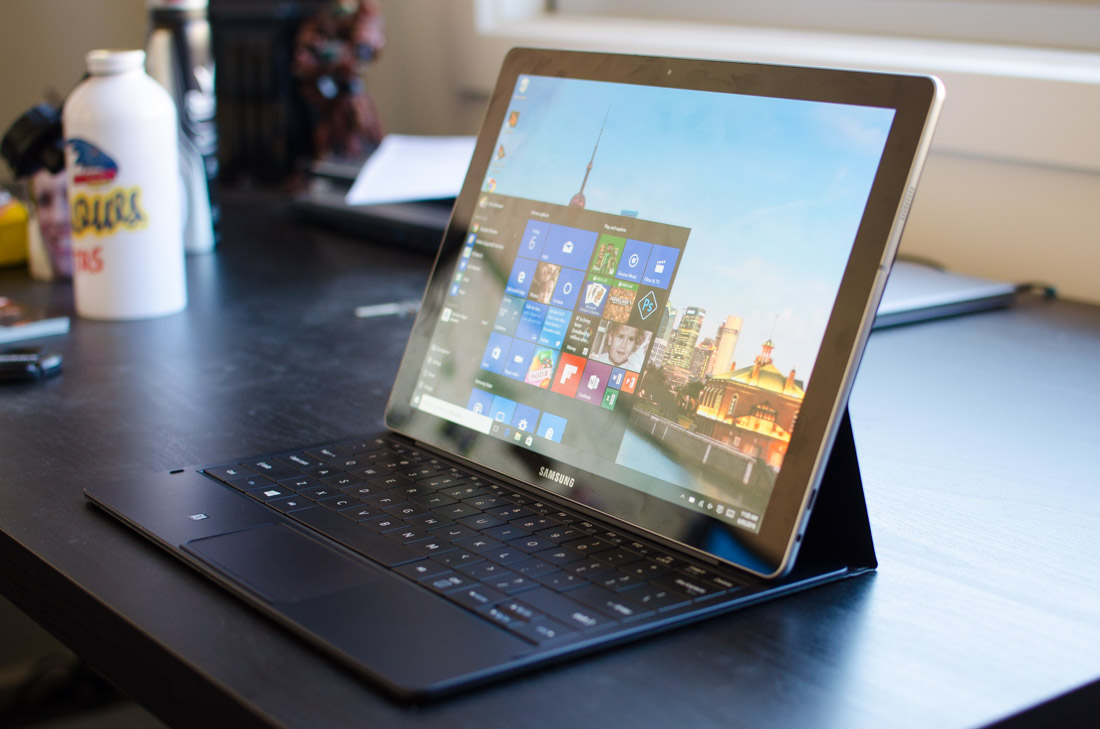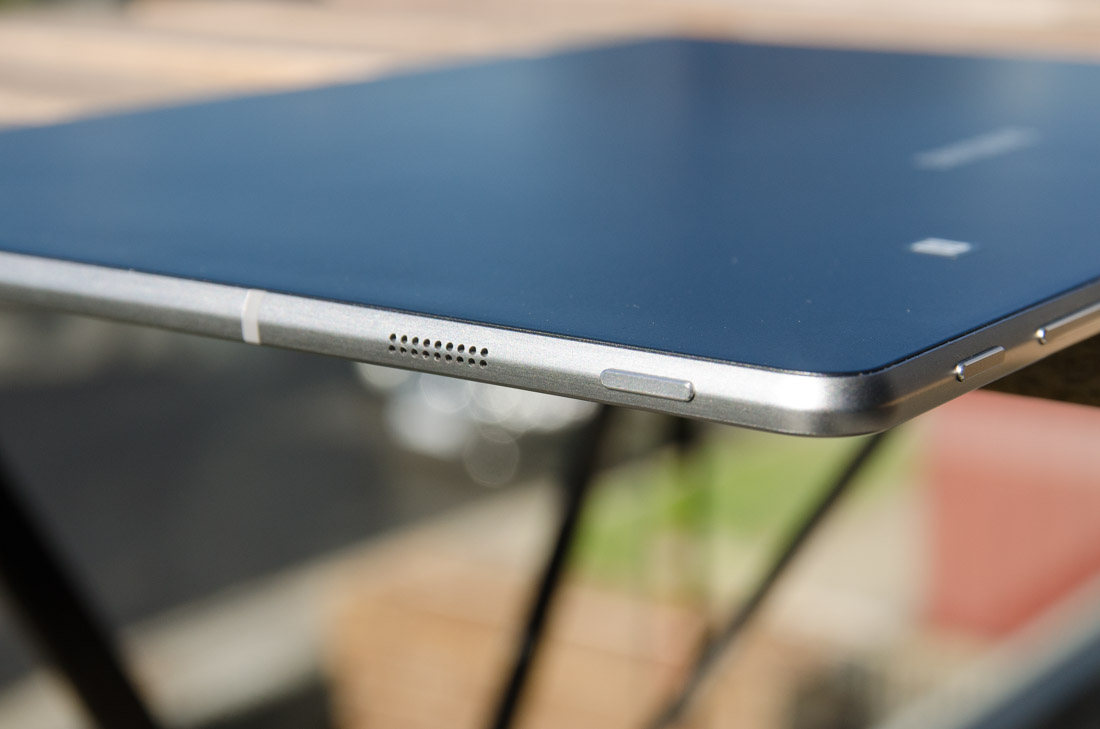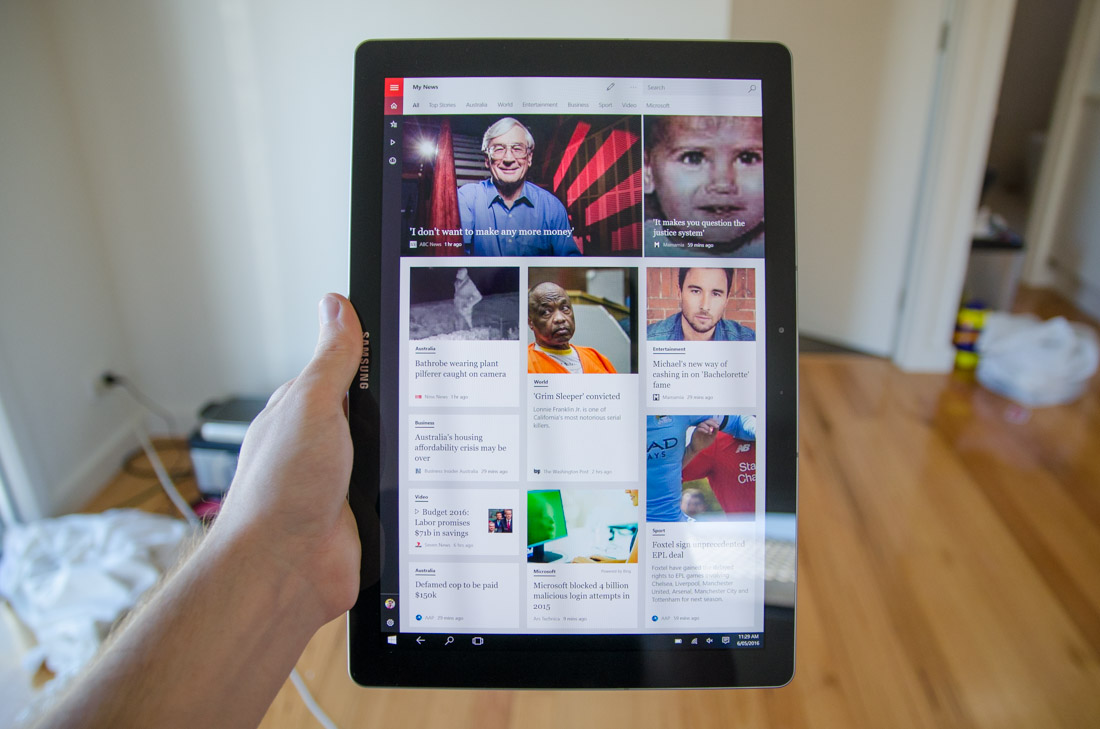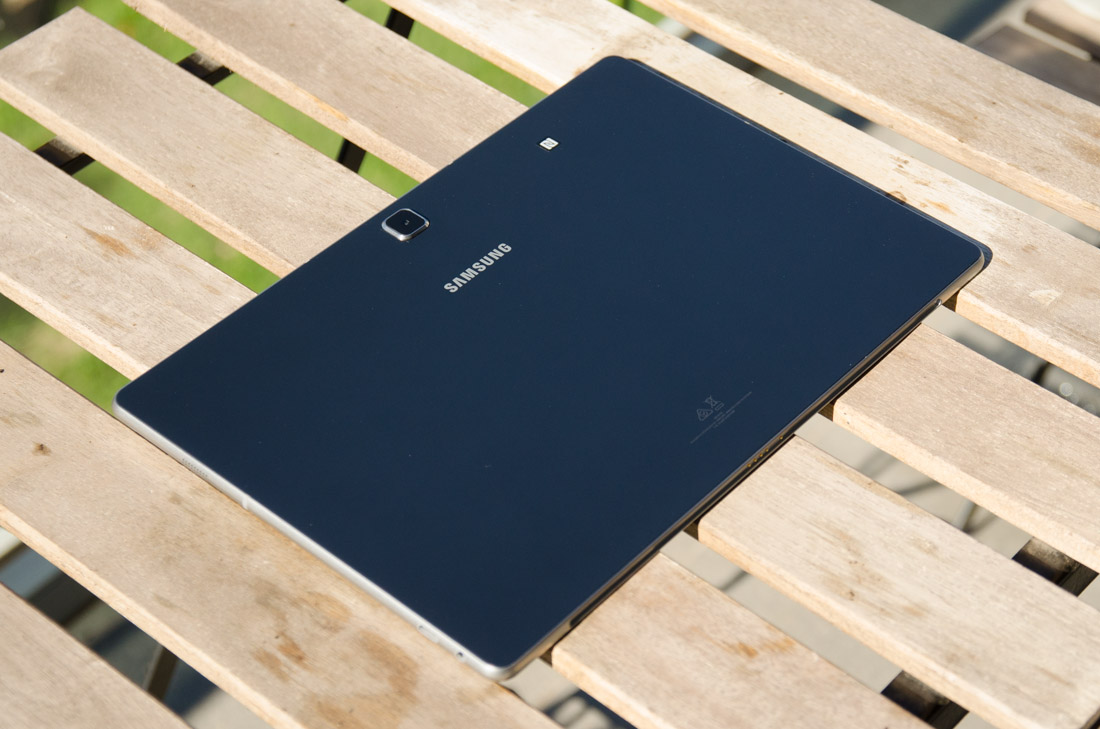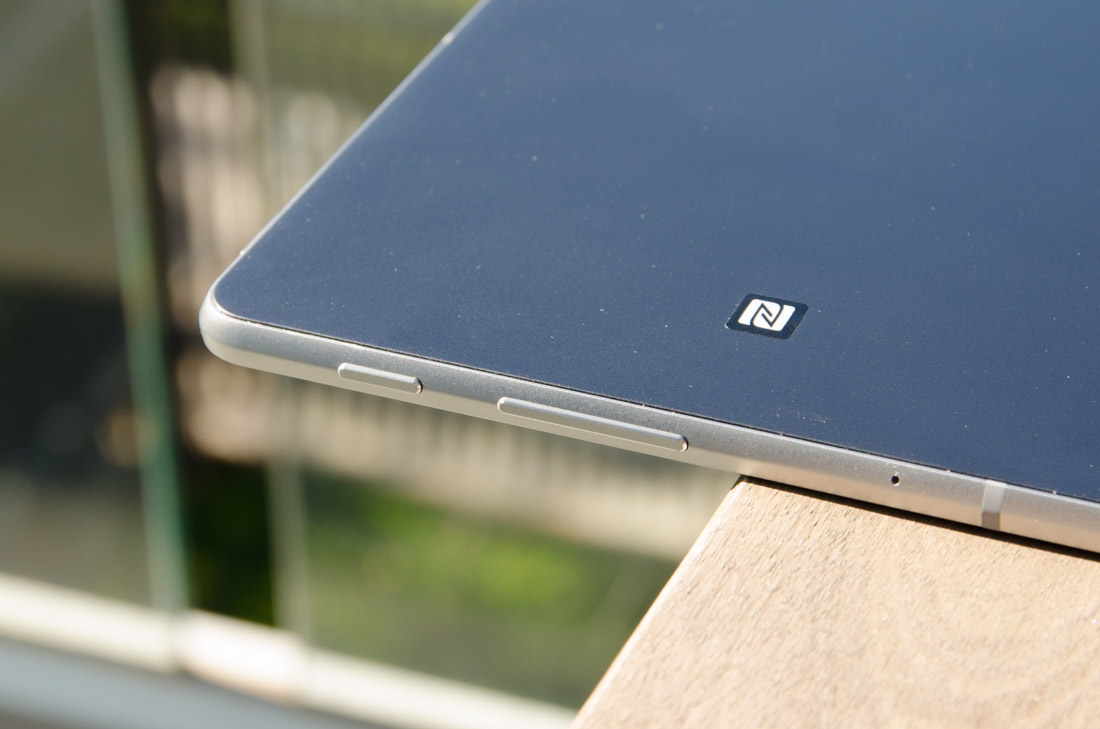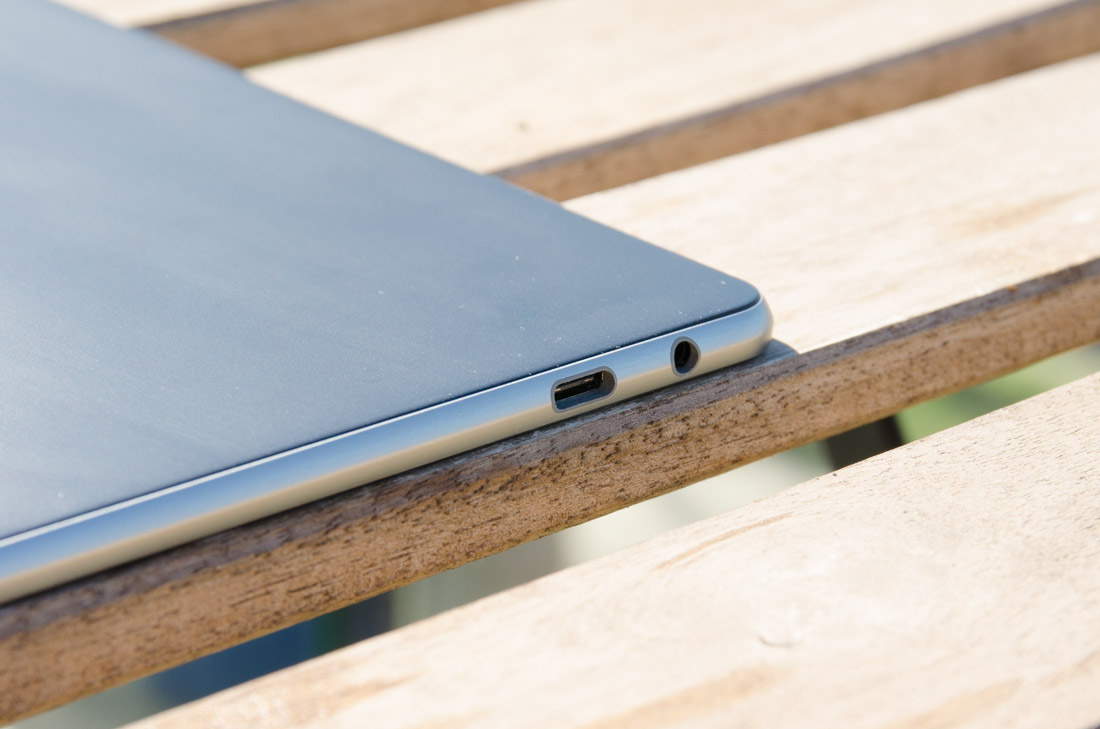When Microsoft first released the Surface several years ago, it was pretty clear that the company was on to something. It wasn't a perfect device, but the portability and flexibility of the design - primarily a tablet but capable of transforming into a semi-functional laptop through a keyboard cover - made it more suitable to some tasks than the Windows products of old.
After a number of iterations over a number of years, the Surface Pro has grown into a popular option for consumers, particularly students that want a portable yet functional tablet. So it's no surprise that various other companies are starting to emulate the Surface design in their own products. There's a market out there, and Microsoft is welcoming the competition with open arms.
The Surface competitor I've been using over the past few weeks is the Samsung Galaxy TabPro S. The name isn't catchy, but there's a lot to like about the hardware in this slim 12-inch tablet running Windows 10, including the AMOLED display and fanless Core M CPU on the inside. Samsung also bundles a keyboard cover with this device, because these sorts of key accessories should be included in the purchase price.
The TabPro S easily has the nicest build of any Samsung tablet I've used. The design borrows many cues from Samsung's latest smartphones, such as the Galaxy S7, particularly around the edges where you'll find beautiful, slightly curved metal.
The near-seamless way that Samsung has connected the metal edges to the smooth glass front panel and textured plastic back is fantastic, making the 6.5mm thin body fit well in the hand.
Samsung also bundles a keyboard cover with this device, because these sorts of key accessories should be included in the purchase price.
The soft-touch plastic that covers the entire back of the TabPro feels great, although it doesn't have the same high-end visual appeal that the all-metal body of the Surface Pro 4 has. With that said, the black display bezel and back panel, combined with the silver metal edges, gives the TabPro an understated look that will fit in well in a business environment.
Aside from the Samsung logo, the only notable element on the back of the TabPro is the protruding five-megapixel camera. I'm not sure why Samsung went for such a large camera unit when rear cameras really aren't important in a tablet (and this camera is mediocre quality). Keeping the camera flush would prevent damage and give the body an extremely sleek look.
The size of the bezels around the 12.0-inch display is a near perfect mix between usability and portability. When holding the device like a tablet, there is enough room around the touchscreen that your hands don't interfere. At the same time, the entire package (including the keyboard cover) is smaller, thinner, and lighter than my favorite laptop, the Dell XPS 13, making it a more portable option.
Despite the portability of the TabPro S, at 12 inches it's still very large for a tablet. It's tricky to hold this device in one hand for extended periods of time due to its size, and at just under 700 grams, arm fatigue can be a factor. It is still possible to use this device like a tablet - I enjoyed some extended periods of internet browsing without the keyboard cover attached - but there's no doubting a 10-inch or smaller tablet is much easier to hold and use.
Luckily Samsung has opted to use a 3:2 aspect ratio display, like recent iterations of the Surface, which makes the TabPro S usable in both portrait and landscape modes as a tablet. It's also a more comfortable aspect ratio for general use, allowing enough space for usable side-by-side applications, and more vertical space when viewing an app in full screen.
There are two speakers that can be found on the left and right edges of the tablet when it's used in landscape mode. Due to the thinness of the body, these speakers are small and don't provide a ton of quality or volume. They're perfectly serviceable for watching the occasional video, but the serious lack of low end punch and accented mids makes these speakers sound like what you'd get from a smartphone. However, I am glad that the TabPro comes with stereo speakers, and their positioning is high enough up the edges that you don't block them while using the tablet handheld.
Concentrated around the top left corner are the three primary buttons you'll find on Windows devices. Along the top edge is both the power button and volume rocker, while on the left edge is a physical Windows button.
The choice to make the Windows button look the same as the power button is an interesting one, and it introduces confusion at first. I didn't end up using the Windows button all that often anyway because Windows 10 itself provides plenty of ways to access the Start screen, although I do understand it could come in handy while using some full screen applications.
Due to the thinness of the TabPro S, the port selection is not great. There is only a single USB Type-C port, along with a 3.5mm audio jack, which limits the accessories you can connect to the tablet without an adapter. In contrast, the Surface Pro 4 doesn't have USB Type-C but does have a full-sized USB-A port, which I still think is a more useful port to have considering the majority of today's accessories still use USB-A.
In the future, when USB-C is more widely used, it won't be an issue to have a single Type-C port on a productivity-focused device like the TabPro. I also appreciate that Samsung is looking to the future and supporting new standards like USB-C, and the fact that the tablet is charged through the port is great. But at least right now, the quest to make the TabPro so slim has introduced a trade-off in the usefulness of its ports.
